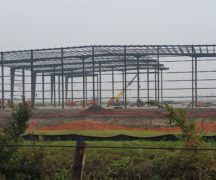By JAN LARSON McLAUGHLIN
BG Independent News
Bowling Green is ready to toss its antiquated and cumbersome economic development plan.
The 14-page document was adopted in 1987 and had minor updates in 1997.
“This is desperately needed,” said Bowling Green City Council member Greg Robinette.
On Tuesday evening, the council’s finance committee listened to a streamlined and updated proposal from Kati Thompson, director of the city’s economic development office.
Thompson’s one-page proposal offered a “comprehensive yet nimble approach.”
“Our world changes really quickly with the rate of technology,” Thompson said, explaining the brevity of the plan. The document addresses overarching goals for the city, while the actionable steps will change year to year, she said.
The finance committee – made up of council members Bill Herald, Mark Hollenbaugh and Robinette – agreed to recommend council adopt the proposed economic development plan.
Hollenbaugh said he liked the flexibility of the plan “to provide a framework of where we want to go.” The “nitty gritty” details can then be addressed in the zoning code and other land use documents, he said.
“This is a great step in the right direction,” Robinette said.
Bowling Green’s efforts are aided by the city’s public-private partnership on economic development, Thompson pointed out.
One of the bullet points in the plan calls for “placemaking initiatives.” Thompson said that is the modern term used for “quality of life.”
“It’s giving people a sense of place,” she said, explaining that companies look for quality of life issues to support their workforces.
In the proposed plan, Bowling Green’s four strategic economic development goals are:
- Sustained economic growth. The city attracts, retains and facilitates the expansion of industrial, professional and commercial business.
- Infrastructure and utility development. The city optimizes planning, funding and partnerships for beneficial land development and expanding municipal utilities.
- Encourage innovation and entrepreneurship. The city creates a community culture of innovation, creativity and entrepreneurship, making Bowling Green the Northwest Ohio hub for these activities.
- Improve quality of life. The city collaborates and participates in community development efforts that enhance the quality of life for residents.
Key economic development efforts include:
- Meeting annually with industry leaders to assess successes, challenges and opportunities for solutions.
- Analyzing key industry sectors (professional services, manufacturing, trades) to recruit based on community assets and goals.
- Supporting workforce development initiatives.
- Preparing land for future development, using the future land use plan as a starting point and the zoning code as a resource.
- Using federal, state and local tools to aid and incentivize development.
- Collaborating with utility partners for effective development.
- Fostering innovation and entrepreneurship.
- Promoting the city and its assets.
- Supporting placemaking initiatives.
Mayor Mike Aspacher said the proposed economic development plan shows energy and innovation.
“It’s very important we’re working together to identify our goals,” he said.
Also at the finance committee meeting, the city’s Finance Director Dana Pinkert presented an annual review of the city’s finances.
“It was a very positive report,” Robinette said. “We came out in a much better position than we thought in 2021.”
Aspacher also said the city finance report was “very good news.”
“This is certainly reason for us to be optimistic about the trajectory of our community,” the mayor said.


